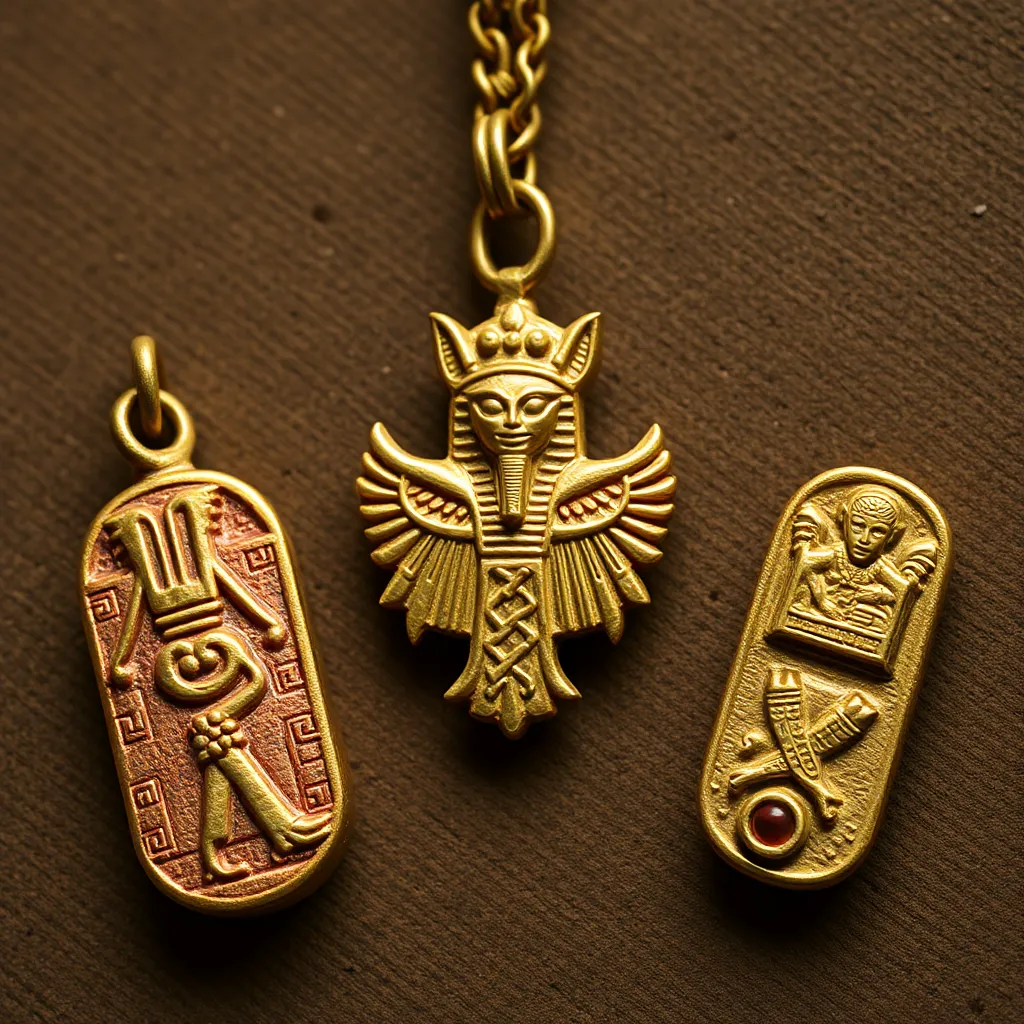Amulets for Protection Against Evil Spirits in Ancient Egypt
I. Introduction
In ancient cultures, amulets served as powerful symbols of protection and assurance. These small objects were believed to hold magical properties, warding off evil spirits and providing security to their wearers. In ancient Egypt, amulets played a significant role in both daily life and the afterlife, reflecting the deep-seated beliefs of its people regarding the supernatural.
The ancient Egyptians held a firm belief in the existence of evil spirits that could cause harm to the living and the dead alike. To combat these malevolent forces, they created various amulets infused with protective symbolism. This article explores the historical context, types, and significance of amulets in ancient Egyptian culture, as well as their lasting legacy.
II. Historical Context of Amulet Use in Ancient Egypt
The use of amulets in ancient Egypt spans thousands of years, with evidence dating back to the pre-dynastic period. Over time, the design, materials, and purposes of amulets evolved, reflecting the cultural and religious influences of the era.
Amulets were not only prevalent in everyday life but also played a crucial role in funerary practices. They were believed to protect individuals from malevolent spirits and ensure safe passage to the afterlife. The continued use of amulets highlights their importance in the spiritual and practical aspects of ancient Egyptian society.
III. Types of Amulets and Their Symbolism
Amulets were crafted from a variety of materials, each chosen for its specific properties and symbolism. Common materials included:
- Stone
- Metal
- Clay
- Glass
Different shapes and designs of amulets held specific meanings. Some of the most popular designs included:
- Scarabs: Symbolizing rebirth and protection
- Eyes (e.g., the Eye of Horus): Representing healing and protection
- Deities: Figures like Isis and Horus were often depicted to invoke their protective powers
Additionally, amulets often featured inscriptions and symbols associated with protection, such as spells or divine names, enhancing their magical efficacy.
IV. The Role of Deities and Divine Protection
Ancient Egyptians believed that certain deities were particularly powerful in providing protection against evil spirits. Key deities associated with this role included:
- Isis: The goddess of magic and motherhood, often called upon for protection.
- Horus: The sky god, symbolized by the falcon, known for safeguarding the pharaoh and the people.
- Anubis: The god of mummification and the afterlife, who protected the deceased from malevolent forces.
Numerous myths and stories highlight these deities’ roles in divine intervention against evil spirits. Rituals and prayers were also an integral part of using amulets, invoking the deities’ protection through sacred words and actions.
V. Amulets in Funerary Practices
Amulets held a special significance in funerary practices, as they were believed to protect the deceased from malevolent spirits in the afterlife. Specific amulets, such as:
- Heart scarabs: Ensured the heart would be weighed favorably in the afterlife.
- Isis amulets: Offered protection and resurrection for the deceased.
- Ankh: The symbol of life, representing immortality.
These amulets were placed in tombs and on the bodies of the deceased to guarantee safety and protection during their journey to the afterlife. The belief in an afterlife was central to ancient Egyptian culture, with amulets serving as crucial tools for ensuring a safe passage.
VI. Archaeological Discoveries and Findings
Numerous archaeological discoveries have revealed the widespread use of amulets in ancient Egypt. Notable sites include:
- The Valley of the Kings: Where many tombs were found containing amulet collections.
- The Temple of Karnak: Unearthed numerous amulets dedicated to various deities.
- The Catacombs of Anubis: A rich source of funerary amulets used in burial rituals.
Analysis of these amulet collections has provided invaluable insights into the beliefs, practices, and daily life of ancient Egyptians, illustrating the significance of these protective objects in their culture.
VII. Modern Interpretations and Legacy of Amulets
Today, there is a renewed interest in ancient Egyptian amulets, particularly in modern spirituality and metaphysical practices. Many contemporary practitioners draw inspiration from the protective qualities attributed to amulets in ancient times.
Modern amulet makers often replicate ancient designs and techniques, showcasing the enduring legacy of these ancient symbols. The relevance of ancient beliefs continues to resonate in today’s understanding of protection, spirituality, and the human desire for safety against unseen forces.
VIII. Conclusion
The significance of amulets in ancient Egyptian culture cannot be overstated. They served as vital tools for protection against evil spirits, reflecting the deep spiritual beliefs of the society. The enduring fascination with these objects speaks to humanity’s timeless quest for safety and assurance in the face of the unknown.
As we explore the intersection of history, spirituality, and cultural symbolism, it becomes clear that the legacy of ancient Egyptian amulets continues to inspire and inform modern practices, reminding us of the age-old desire for protection and peace.




